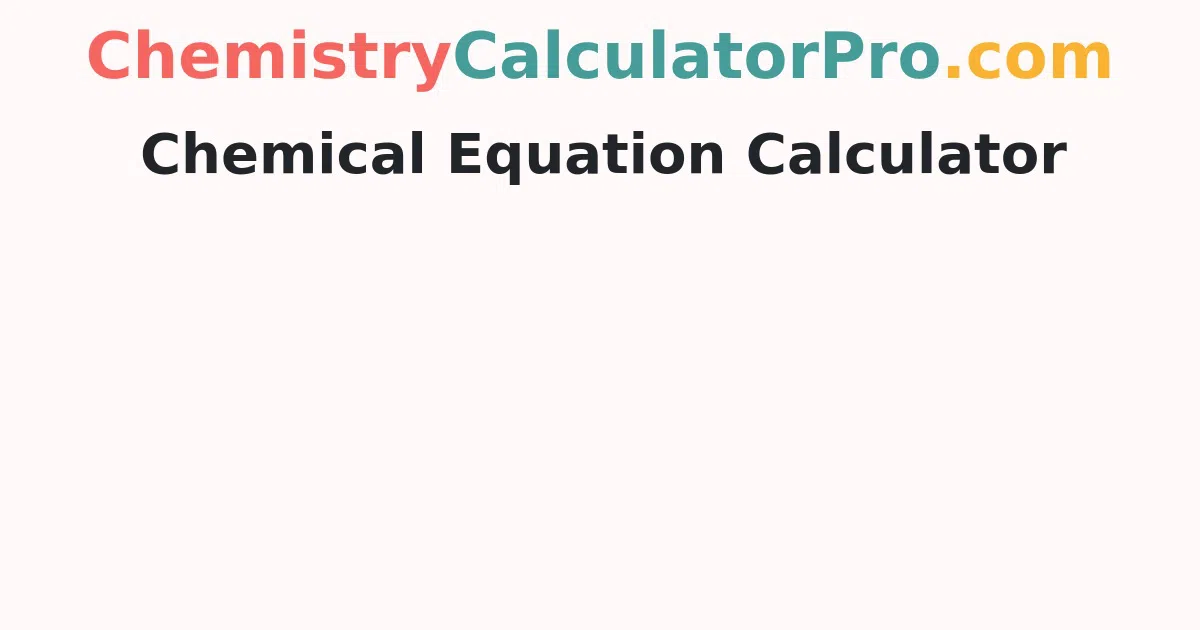Chemical Equation Calculator
To balance the full equation in minutes, utilise a free and user-friendly Chemical Equation Calculator tool. To obtain the associated immediate concerned result, enter the chemical equation in the appropriate input area and press the calculate button.
What is the Chemical Equation?
A chemical equation is a symbolic representation of a chemical reaction in which the reactants appear on the left side and the products appear on the right side. Arrow symbols distinguish the reactants and products. A plus sign (+) separates each distinct ingredient in the chemical process.
Example: 2 HCl + 2 Na → 2 NaCl + H2
How to Balance Chemical Equation?
A chemical equation is a symbolic representation of a chemical reaction. We provide a detailed step-by-step approach for balancing any chemical equation in this article.
- Step 1: Let's assume a chemical equation.
- Step 2: Count the number of each and every atom on the right and left sides of the equation first.
- Step 3: To make the number of things on both sides equal, add numbers to the reactants and products.
- Step 4: Remove the common terms from the denominator and numerator.
How Do I Use the Chemical Equation Calculator?
The following is the procedure how to use the chemical equation calculator:
- Step 1: In the input field, type the chemical equation.
- Step 2: To get the balanced equation, click the "Balance" option.
- Step 3: Finally, a new window will open with the balanced equation, structure, and equilibrium constant for the specified chemical equation.
FAQ on Chemical Equation
1. What are the fundamentals of chemical equation balancing?
Remember that you modify the coefficients in the formulas, not the subscripts, to balance an equation. After you've balanced one element, go ahead and balance another. Continue until all of the factors are in balance. It's best to save the components that can be discovered in their purest form for last.
2. What is the best way to tell if a chemical equation is balanced?
A given element is balanced if the number of atoms on either side of the equation is the same. The equation is balanced if all of the elements are balanced.
3. What are the key distinctions between chemical and physical transformations?
A chemical change is everlasting, whereas physical change is just transitory. Chemical change influences both physical and chemical properties, whereas physical change affects only physical qualities such as shape, size, and colour. Boiling an egg and burning coal are good instances of chemical changes, while melting wax, boiling water, and freezing water are good examples of physical changes.
4. What are the two advantages of utilizing chemical equations?
The following are some of the benefits of employing a chemical equation:
(i) It becomes simple to represent a chemical reaction. It helps you save time and space when writing. (ii) The amount of reactant to be employed can be correctly calculated in order to prepare a specific amount of the result.
5. What is the purpose of balancing the chemical equation?
The rearrangement of atoms is the essence of a chemical reaction. To satisfy the law of conservation of matter, which stipulates that matter cannot be generated or destroyed in a closed system, chemical equations must be balanced. The balancing of a chemical equation is governed by the rule of conservation of mass.
